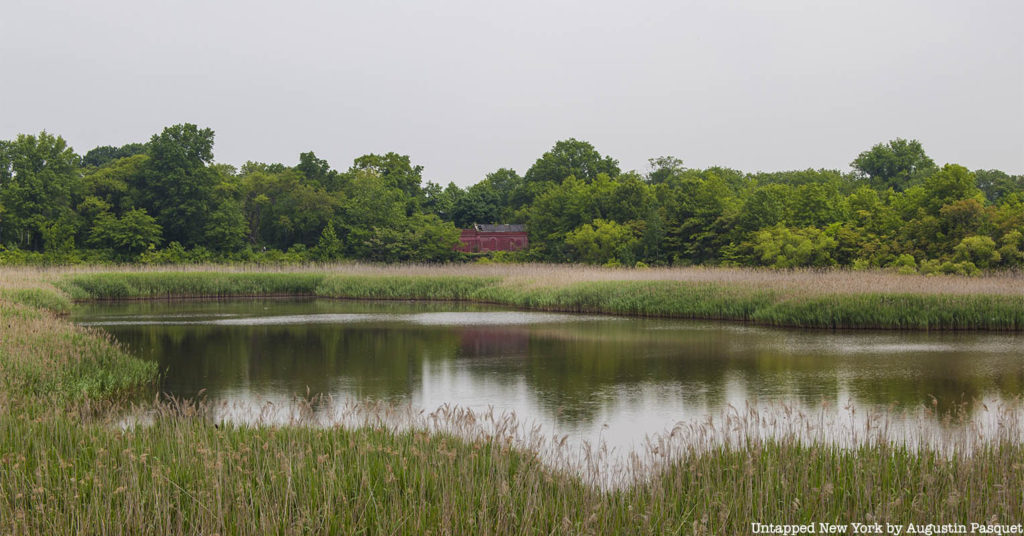2. The Ridgewood Reservoir once provided much of Brooklyn’s main water supply

In the southeastern corner of the Ridgewood area is the Ridgewood Reservoir. Built from 1856 to 1858, the 50-acre Ridgewood Reservoir was created to aid in fixing the city of Brooklyn’s rapidly depleting water supply. At the time, Brooklyn lacked a stable water source, with the Croton River already providing resources to the City of New York. The only adequate solution came to be tapping into small streams on Long Island to conduct their water into an elevated reservoir for usage throughout Brooklyn. By 1900, Brooklyn obtained over 45 million gallons of water per day from the Ridgewood Reservoir and other surrounding sites. With the water provided by the Ridgewood Reservoir, the surrounding area’s population began rapidly expanding.
After its decommission in 1990, the Ridgewood Reservoir lay neglected by the city. Nature eventually took over, turning the area in the outer basins into a lush freshwater wetland that attracted various flora and fauna including threatened and endangered species such as the short-eared owl and pied-billed grebe. Surrounding the reservoir’s second basin on the right and left sides are the East and West Causeways, with the East Causeway having been restored by the non-profit organization NYC H2O in June 2021. Once covered in debris and overgrowth, the East Causeway now serves as an important recreational and educational space for New Yorkers to learn more about the city’s natural resources.





